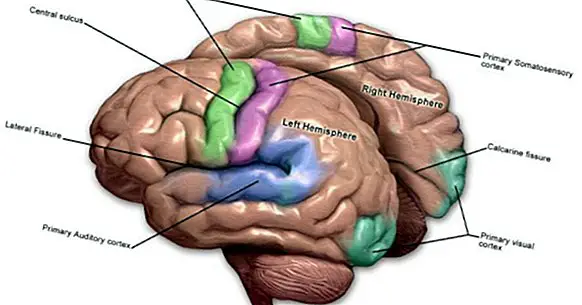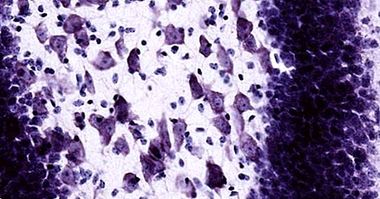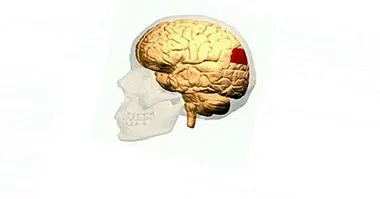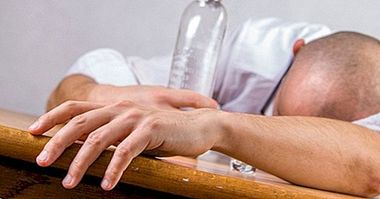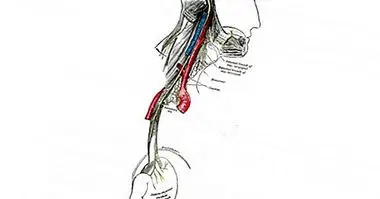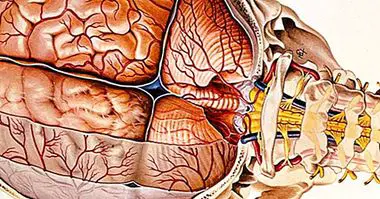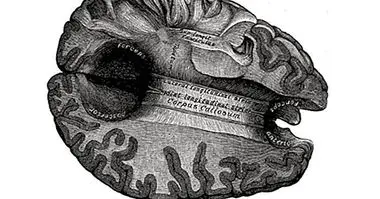Motor cortex of the brain: parts, location and functions
Greets. Smile. Kiss. Run. Eat. All these actions have at least one aspect in common: they require some type of movement on the part of the subject to be carried out. The ability to move is fundamental to survival , since it allows us to react to stimuli and actually execute any type of behavior, including those necessary to allow our survival. But the movement does not occur without more, it requires some planning, coordination and precision.
At the level of the brain, this control is carried out mainly by the motor cortex of the brain , although it is also influenced and mediated by other brain structures. Throughout this article we can see what the motor area is, where it is located and what parts it is composed of, as well as some of the main problems that arise from its injury.
- Related article: "Parts of the human brain (and functions)"
Motor cortex of the brain: location and functions
It is called the motor or motor area of the brain to that part of the cerebral cortex whose main functions are to allow the generation, maintenance and termination of voluntary and conscious movements by the subject.
This brain region is located in the upper and rostral part of the brain, in the posterior part of the frontal lobe, located just before the central or Rolando sulcus and the somatosensory area. It is in this area that Penfield's motor homunculus is represented, a representation that indicates the parts of the cortex centered on the movement of certain muscles Among those that include some especially innervated as the hands, tongue or face.
- Maybe you're interested: "Associative cortex (brain): types, parts and functions"
Main regions of the motor area of the brain
Within the motor cortex we can find different regions, all of them of great importance when it comes to managing movement. Among them the main ones are the following.
1. Primary motor cortex
The main structure responsible for the movement, is the area that will generate and send the order of movement to all voluntary muscles of the body. It is the part of the brain that sends the order to the muscles to contract or tighten , generating the movement.
The primary motor cortex does not work alone, but requires information from the following areas to plan and develop the movements. In the primary motor cortex are, among others, the Beltz cells. These cells of great length, which will go through the spinal cord to make synapses with other motor neurons.
2. Secondary motor cortex
This area has an important role when it comes to programming and planning the movements and sequences to follow in order to perform movements in a precise and coordinated manner. In spite of this and that the electrical stimulation of these areas can produce movement, it is not in itself that which is dedicated to realizing them, but focuses on organize the movement before the primary motor can carry it out.
In order to carry out a movement, it will first be necessary to act on these areas, in order to later be able to pass the information to the primary motor area and once there the movement order is sent. It is very connected to the association areas. Within the secondary motor area we can find two regions of great relevance.
2.1. Premotor area
Located in the motor cortex, in front of the primary motor cortex and near the Sylvian fissure , is the premotor area or cortex. This zone is especially linked to programming and movement guidance, storing motor programs learned through experience. It also includes the movement necessary for speech. It usually acts on those motor responses guided by an exogenous stimulus.
2.2. Supplementary motor area
Part of the secondary motor cortex, the supplementary motor area is associated with planning, programming and coordination in complex movements, as well as the initiation of movement. Also participates in aspects such as the adoption of postures and also has influence on uncoordinated movements.
3. Broca's area
In different classifications Broca's area is included within the motor areas of the brain, since allows the production of language and the muscular movement necessary for it. It is located at the edge of the supplementary motor area.
- Related article: "Broca's area (part of the brain): functions and their relationship with language"
4. Areas of association of the posterior parietal cortex
In some classifications this area appears as one of the motor areas, because transforms visual information and other senses into motor instructions .
- Perhaps you are interested: "Parietal lobe: characteristics and functions"
Problems and linked disorders
As we have indicated previously, the motor cortex is a cerebral region of great importance at the time of being able to carry out practically any action. That is why a lesion in these brain areas can have severe repercussions in the lives of patients.
One of the problems that the injury or destruction of the cortex or motor area can generate is paralysis and loss of mobility, be it in a specific part of the organism, in a hemibody or in the whole body. It is possible that hemiplejias or tetraplejias appear. If the lesion is only in one hemisphere, the paralysis will occur contralaterally: that is, if the right motor cortex is injured, the left hand will be paralyzed.
With regard to the secondary motor areas, the effects of an injury in them usually alter the ability to perform the movements in a coordinated and sequential manner. We are talking about the emergence of possible apraxias, or aphasias or dysarthria when we refer to problems in the production of the movements necessary to communicate. Agraphia can also be produced , because the movements necessary to write, problems in the feeding or even visual problems can not be carried out correctly, since the movement of the facial muscles and organs is not properly regulated.

